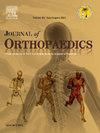Formal physical therapy may be unnecessary following total knee arthroplasty: A prospective randomized study
IF 1.5
Q3 ORTHOPEDICS
引用次数: 0
Abstract
Objectives
Total knee arthroplasty (TKA) is the most commonly performed joint replacement surgery in the United States. With an aging population, the incidence of TKA is expected to significantly increase in future decades. Historically, outpatient physical therapy was considered a crucial aspect of TKA postoperative care. But in recent years, its necessity has been questioned, with national trends moving towards self-directed home exercise programs (HEP) in lieu of formal PT.
Methods
A prospective randomized control study was conducted on 341 patients with TKA from January 2017 to December 2018. At 2 weeks, if 90° of flexion was observed, patients were recommended (1) no PT with home-exercises or (2) formal PT. Range of motion was recorded at 6 weeks and 3 months postoperatively.
Results
Of the 341 eligible patients who underwent primary TKA, 248 patients were enrolled and randomized to formal PT or HEP. Patients assigned to HEP achieved an average of 109° and 118° of flexion at 6 weeks and 3 months respectively, while patients randomized to PT achieved 106° and 121° of flexion (p > 0.05). All patients achieved a target range of motion greater than 100° at 6 weeks and 110° at 3 months. Patients assigned HEP had an associated average cost savings of $900 per patient compared to PT patients.
Conclusion
Formal PT may not be necessary if patients are progressing appropriately after surgery. Instead, a home exercise plan could be a more efficient and cost-effective component of postoperative rehabilitation.
Level of evidence
I.
求助全文
约1分钟内获得全文
求助全文
来源期刊

Journal of orthopaedics
ORTHOPEDICS-
CiteScore
3.50
自引率
6.70%
发文量
202
审稿时长
56 days
期刊介绍:
Journal of Orthopaedics aims to be a leading journal in orthopaedics and contribute towards the improvement of quality of orthopedic health care. The journal publishes original research work and review articles related to different aspects of orthopaedics including Arthroplasty, Arthroscopy, Sports Medicine, Trauma, Spine and Spinal deformities, Pediatric orthopaedics, limb reconstruction procedures, hand surgery, and orthopaedic oncology. It also publishes articles on continuing education, health-related information, case reports and letters to the editor. It is requested to note that the journal has an international readership and all submissions should be aimed at specifying something about the setting in which the work was conducted. Authors must also provide any specific reasons for the research and also provide an elaborate description of the results.
 求助内容:
求助内容: 应助结果提醒方式:
应助结果提醒方式:


